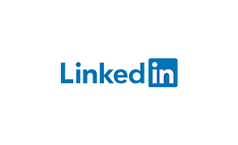- Homepage
- Resource centre
- News
- The week in bunkers: Will Sohar mass flow meter move snatch Fujairah market share?
The week in bunkers: Will Sohar mass flow meter move snatch Fujairah market share?
Analysis published by Lloyd's List on 22 August 2024 | Written by Enes Tunagur
Reproduced with permission, view article on their website here.
Oman is aiming to turn Sohar into an alternative bunker fuel hub with a hefty investment and strict rules to ensure quality.

Sohar port authority said it would make mass flow meters mandatory from 2025.
The Omani port of Sohar made the headlines in February this year when it signed a Memorandum of Understanding with trading giant Trafigura’s bunker supplier TFG Marine to set up an international bunker fuel supply operation.
In April, even bigger news emerged, as the Sultanate of Oman inked a supply agreement with French energy company TotalEnergies for 800,000 tonnes of LNG from Oman’s Marsa project.
The agreement sees 1m tonnes of LNG liquefaction capacity in Sohar to supply the marine fuel market from 2028.
Both deals show the sultanate’s aims to make Sohar an alternative fuel bunkering hub rivalling Fujairah, the third-biggest bunker port in the world after Singapore and Rotterdam.
Another key decision by the Sohar port pointed to the country’s ambitions to lure bunkering demand as soon as possible, as the port authority announced it would make mass flow meters mandatory from 2025. MFMs ensure bunker buyers receive the quantity, for which they paid and it has been mandatory in Singapore for more than 10 years.
TFG Marine sent the 7,994 dwt bunker tanker Margherita Cosulich (IMO: 9825051) to Sohar, which has been delivering marine fuels to vessels in the Omani ports of Sohar and Duqm since then. The vessel is equipped with an MFM, as TFG uses the device in more than 50% of its global deliveries and plans to reach 100% within the next two years.
TFG, a joint venture between Trafigura and Fredriksen-backed shipowners Frontline and Golden Ocean, was the second-biggest physical supplier in Singapore last year.
Will Sohar succeed?
Bunker suppliers expect the bunkering map to significantly change in a multi-fuel future, as refuelling will need to happen closer to source, meaning more bunker hubs will appear in the coming decades.
There is no doubt that Oman took some right steps to establish Sohar as a bunkering hub, especially if it doubles down on this plan to channel its oil-derived funds to build the infrastructure needed for new fuels such as LNG, ammonia and methanol.
Oman also has some big alternative fuel production plans that could boost the chances of it becoming a future fuel hub. BP recently announced it bought a stake in Oman’s Hyport Duqm green ammonia project with a planned ammonia capacity of 330,000 tonnes per annum.
Despite the sultanate’s ambitions, Sohar is unlikely to become a major hub for conventional fuels soon, as the port first has to compete with local rivals in Muscat, Duqm and Salalah before taking on Fujairah.
Luring Singapore’s second-biggest supplier with a progressive MFM scheme will surely put Sohar on the bunkering map, although demand at the port will only meaningfully rise if the number of suppliers increase to make prices more competitive with other ports in the region.
Price reporting firm General Index assessed very low sulphur fuel oil in Sohar at $599.75 per tonne, compared with $570.50 per tonne for Fujairah.
Sohar’s close location to Fujairah could boost demand in the Omani port in the event of congestion in the latter, although the limited number of suppliers in Sohar could quickly drive vessels to other ports in the region.
Strong demand in Fujairah resulted in cargo loading delays to push VLSFO prices up by $25 per tonne this week, which in turn stretched the earliest supply date to September 2, according to a report from bunker trader KPI OceanConnect.
Sohar will need more time to have a fully developed bunker hub offering most fuel grades, but the willingness from the oil-rich country to invest in alternative fuel bunkering infrastructure will likely provide the port with a first mover advantage when demand for fuels such as LNG, methanol and ammonia pick up.


